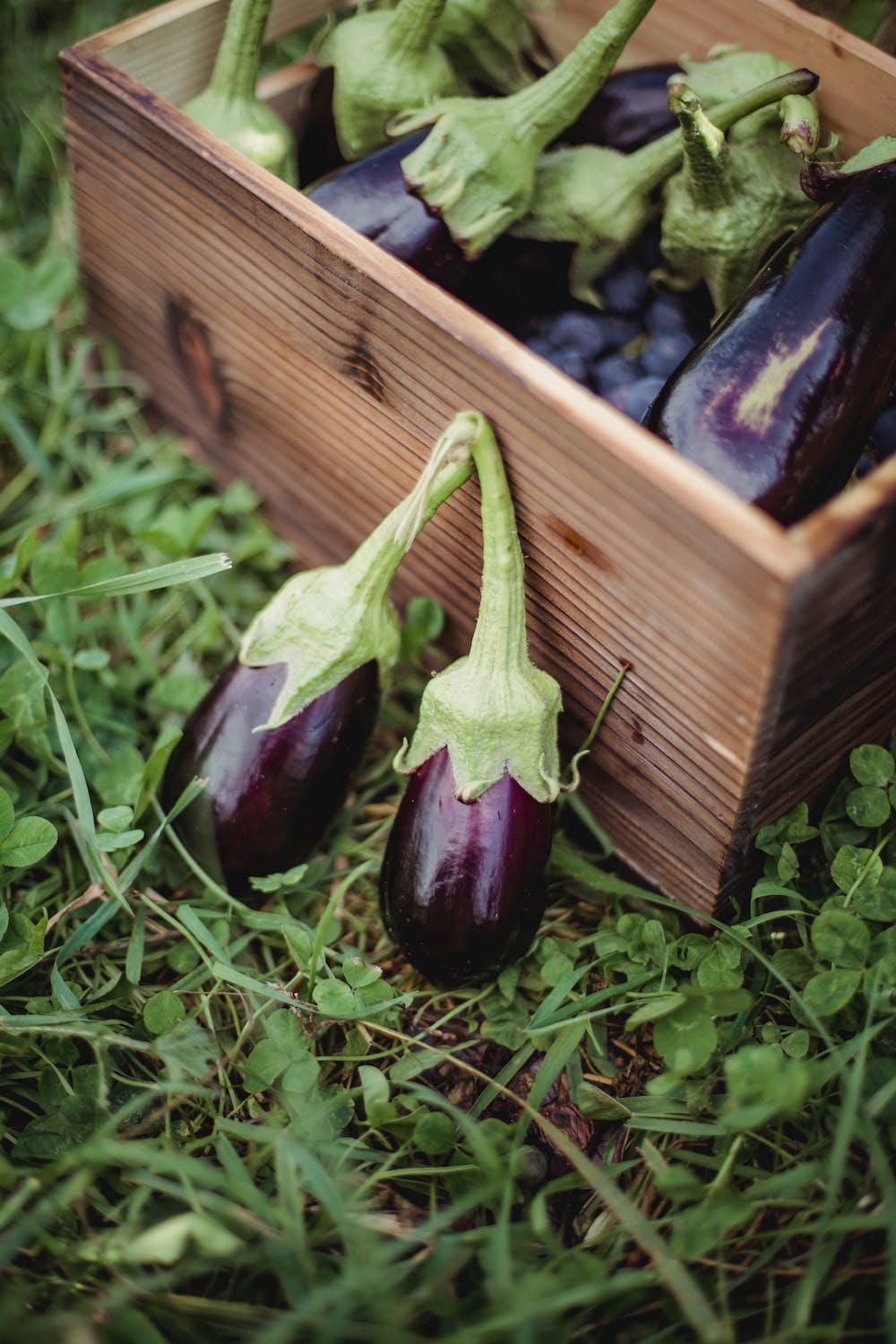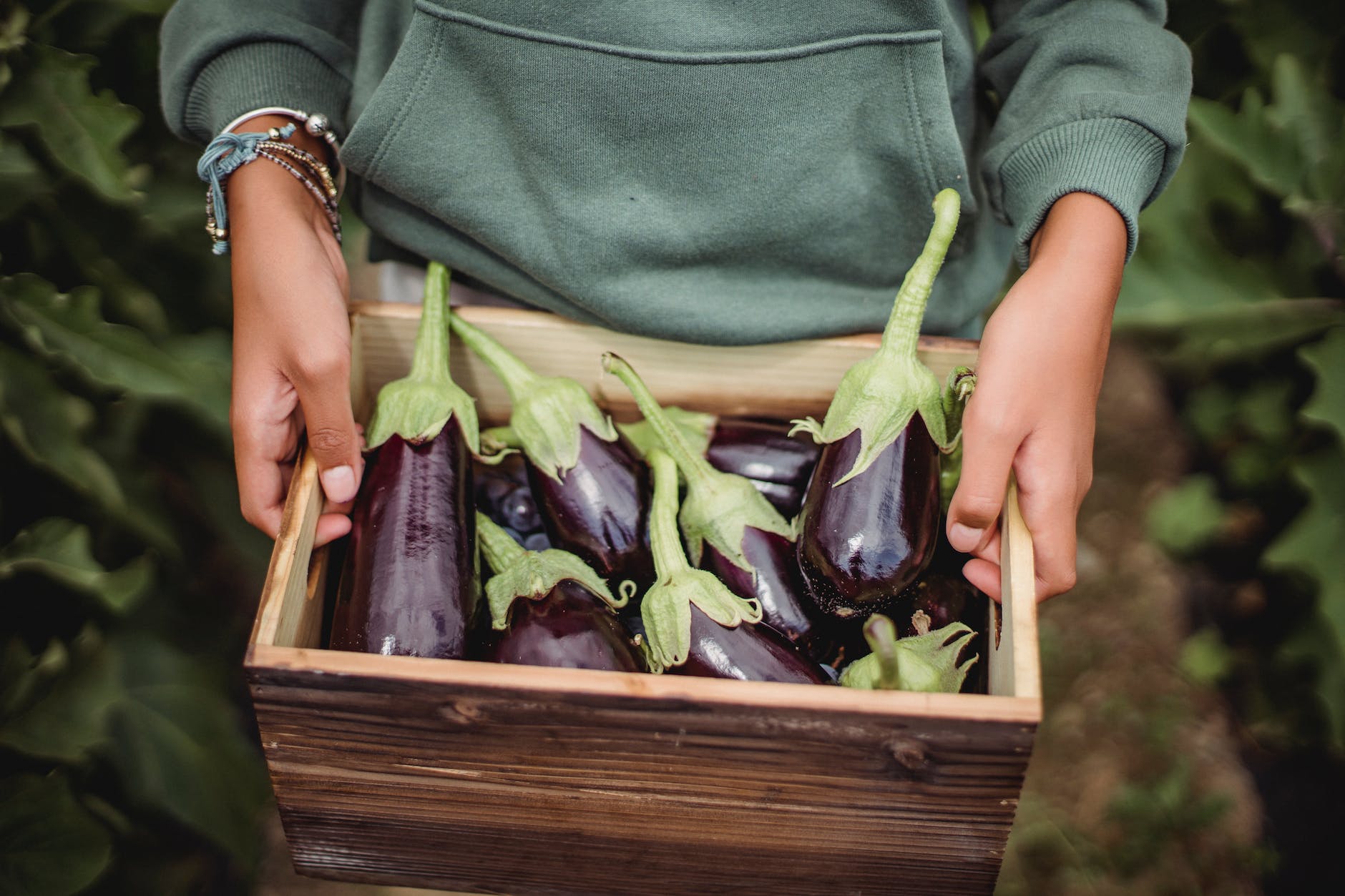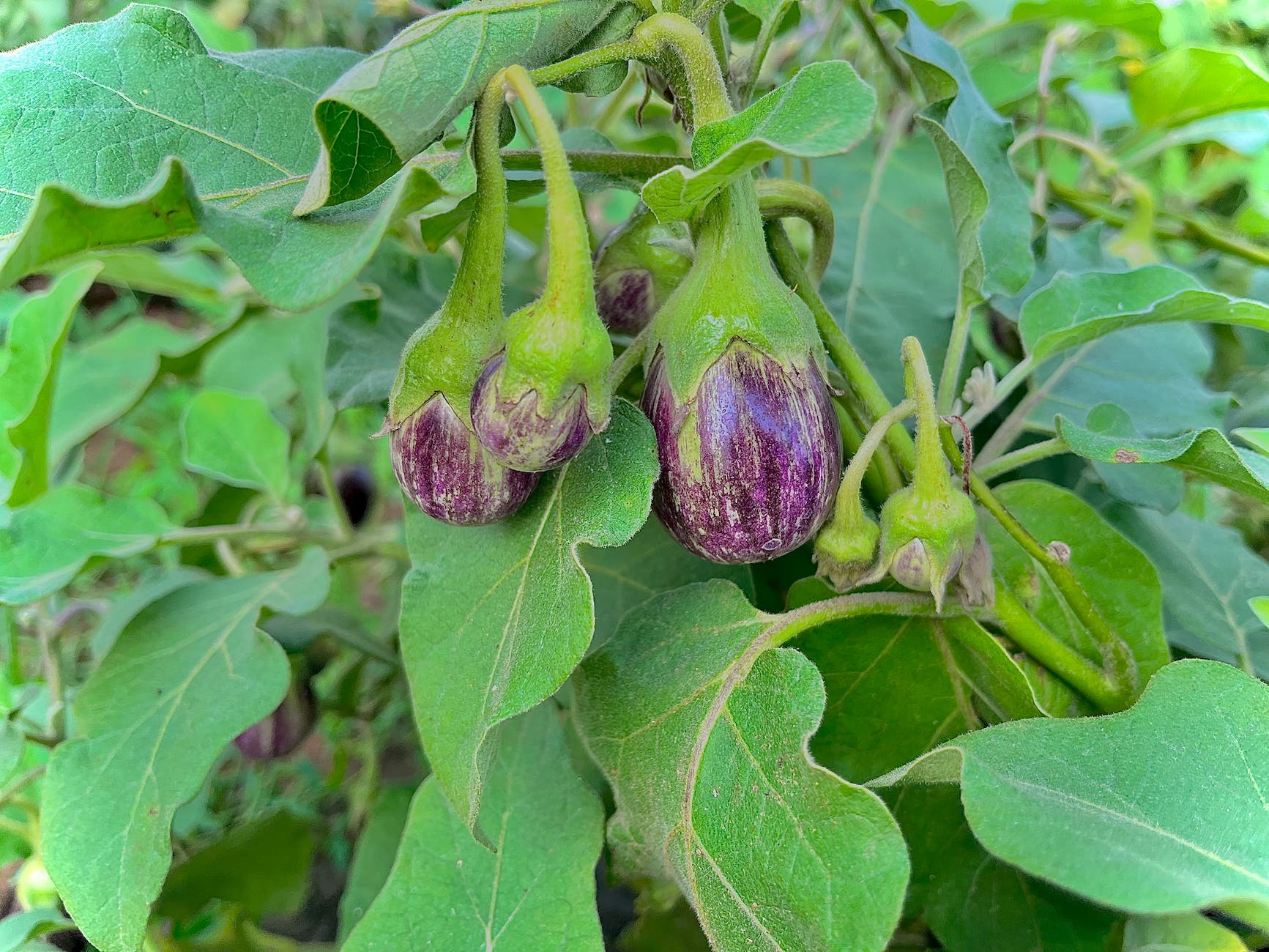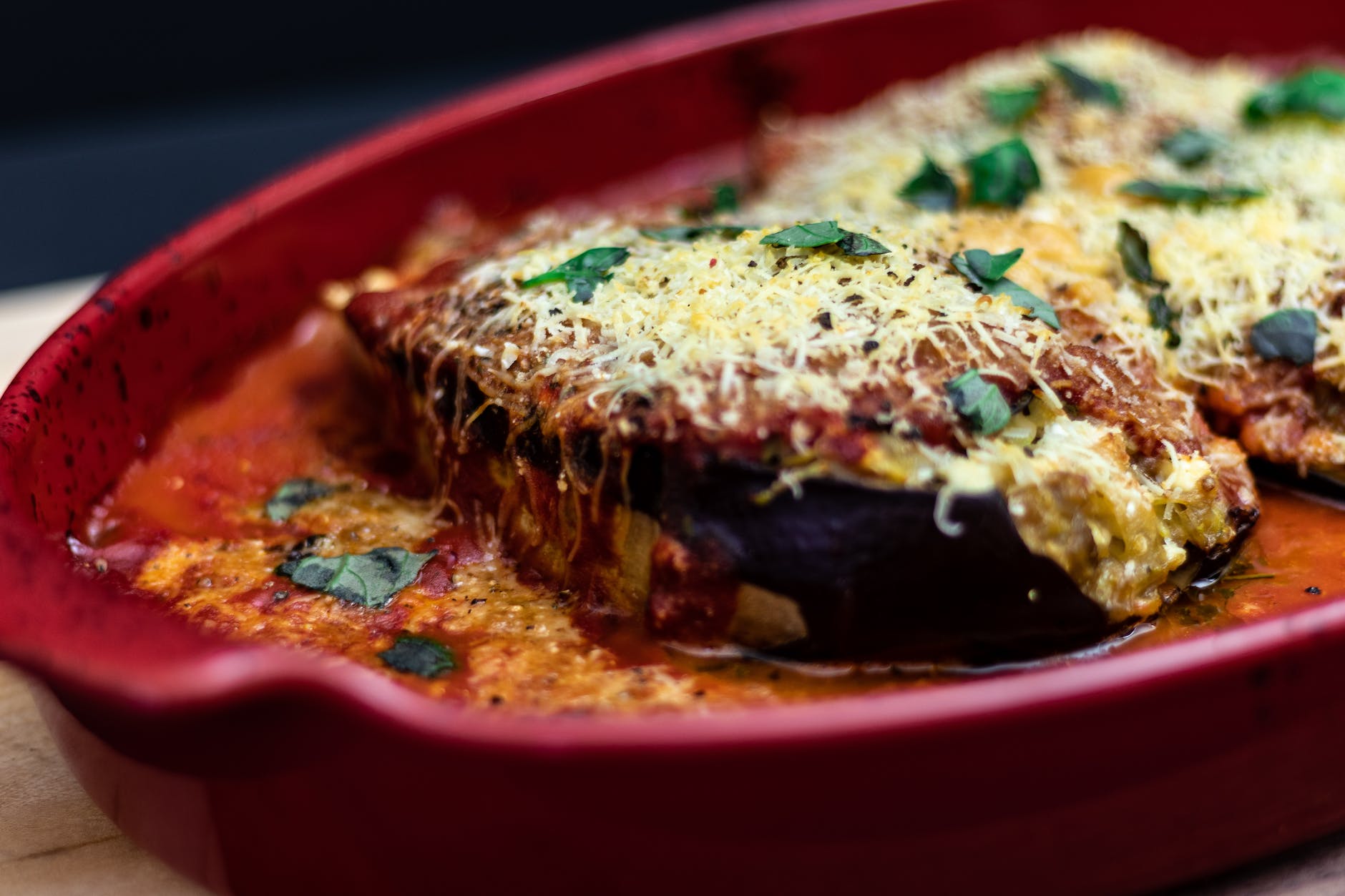
Eggplants are awesome! Not everyone agrees, though. Growing them can be a bit tricky, and cooking them might seem intimidating at first. But don’t worry, once you get the hang of it, eggplants can bring deliciousness to your plate and a unique touch to your garden. Learning about what they need is easy, and soon you’ll be an eggplant pro!
You can make all sorts of tasty dishes with eggplant, like salads or ratatouille. If you’re not a fan of the taste, use them to decorate your garden or put them in pots indoors. These lovely plants can thrive in raised beds, pots, and even when hanging upside down! That’s why people think they’re such special veggies.
Believe it or not, eggplants have been around since at least 300 BC in Southeast Asia. They were super important for cooking and medicine back then. In 5th century China, people used them to make dye and for all kinds of recipes. Europeans loved eggplants too, even though Italians once believed eating them would drive you crazy. In India, they call eggplant the “King of Vegetables” to this day.
Take our word for it – adding eggplants to your garden and meals is a fantastic idea. They’re packed with nutrients and add a pop of beautiful color. Plus, they make great buddies with tomatoes in the garden. So, why not give it a shot and start growing eggplants today? You won’t regret it!
How to Choose the Right Variety
Popular Eggplant Varieties for Home Gardens
When it comes to eggplants, there’s a wide array of varieties to choose from. Each has its unique flavor, size, and color, making the selection process quite enjoyable. Here are a few popular choices that thrive in home gardens:
- Black Beauty: This classic variety is a favorite among many home gardeners. With glossy, deep purple skin and a rich, meaty flavor, Black Beauty is a reliable option for those new to eggplant cultivation.
- Ichiban: If you’re short on space, Ichiban is your go-to eggplant. Its slender, elongated shape makes it perfect for small gardens or even containers. Plus, it boasts a mild, sweet taste that’s perfect for various culinary delights.
- Gretel: For those who prefer a petite option, Gretel is a delightful white eggplant. These miniatures may be small, but they pack a punch in terms of flavor. They’re also great for container gardening.
- Rosa Bianca: Looking to add a touch of elegance to your garden? Rosa Bianca’s lavender and white-striped skin is not only visually stunning but also offers a creamy texture and mild taste. It’s a gourmet choice for home chefs.
Considerations for Climate and Soil Conditions
Eggplants are warm-season veggies, so they love basking in the sun. Make sure your garden receives at least 6-8 hours of sunlight daily. As for soil, eggplants prefer well-draining, slightly acidic, to neutral soil with a pH between 6.0 and 7.0.
Consider your local climate when choosing a variety. Some eggplants are more heat-tolerant, while others thrive in cooler temperatures. If you’re unsure, check with your local nursery or extension office for advice tailored to your specific region.
Determining the Space Available for Growing
Ah, the age-old question: How much space do I need for my eggplants? Well, the answer depends on the variety you choose. Compact varieties like Ichiban or Gretel are perfect for smaller spaces or container gardening. If you have a bit more room to spare, go for larger varieties like Black Beauty or Rosa Bianca, giving them the space they need to spread out and flourish.
Before you get digging, take a stroll around your garden and envision where these beautiful eggplants will fit best. Adequate spacing ensures good air circulation and helps prevent diseases.

Starting from Seeds
Eggplants like it cozy when they’re just starting out. I recommend using a lightweight, well-draining seed starting mix. You can find this at your local garden center, or if you’re feeling crafty, mix equal parts of vermiculite, perlite, and peat moss. This combo gives those seeds a comfy bed to sprout in.
Fill your seed trays or small pots with this mix, leaving about half an inch from the top. Pat it down gently – we want the soil snug but not too tight.
For eggplants, start your seeds indoors about 8-10 weeks before your region’s last expected frost date. This gives your little eggplant babies enough time to grow big and strong before they brave the outdoor world.
Step-by-Step Guide to Planting Eggplant Seeds
Now, the fun part – planting those seeds! Follow these easy steps, and you’ll have a front-row seat to the magic of germination.
1. Soil Preparation:
- Fill your trays or pots with the seed starting mix.
- Moisten the soil evenly but avoid making it waterlogged. Aim for that Goldilocks balance – not too dry, not too soggy.
2. Seed Planting Depth:
- Create small holes in the soil about a quarter to a half inch deep. Think of it like planting a tiny treasure chest for each seed.
3. Watering and Temperature Considerations:
- Gently place one or two eggplant seeds in each hole.
- Cover them with soil, pat it down lightly, and give them a gentle sprinkle of water.
- Keep the soil consistently moist but not waterlogged. Eggplants are like us – they don’t like wet feet!
4. Germination Tips:
- Cover your trays or pots with plastic wrap or a humidity dome to create a mini-greenhouse effect. This helps maintain the right moisture and temperature for germination.
- Place them in a warm spot, around 70-80°F (21-27°C). A sunny windowsill or under a grow light works wonders.
Transplanting Eggplant Seedlings
Once your eggplant seedlings have grown to about 6-8 inches tall and have a couple of sets of true leaves, they’re ready for the big move.
Now, let’s prep that garden bed. Eggplants like it warm, so wait until the danger of frost has passed. Choose a sunny spot – they thrive on 6-8 hours of sunlight a day.
Clear the area of any weeds or debris. We want our eggplants to have a clean slate and all the space they need to spread their leafy wings.
Transplanting Process
Okay, it’s showtime! Here’s how you can ensure a smooth transition for your eggplant seedlings:
1. Proper Spacing Between Plants:
- Give your eggplants some elbow room. Space them about 18-24 inches apart. This ensures good air circulation, preventing diseases and letting each plant soak up the sunshine.
2. Soil Amendments for Transplant Success:
- Eggplants appreciate well-draining, nutrient-rich soil. Mix in some compost or well-rotted manure before planting – it’s like giving them a nutritious meal to start their new life.
- If your soil tends to be on the heavy side, adding a bit of sand can improve drainage.
3. Watering and Care After Transplanting:
- Water your seedlings well before the transplant. Moist soil helps them slide out of their pots more easily.
- Once in the ground, give them a good soak. This helps settle the soil around their roots and reduces transplant shock.
- Mulch is your friend. Spread a layer around each plant to keep the soil moist, suppress weeds, and maintain an even temperature.
Now, keep an eye on your newly transplanted eggplants. Water them regularly, especially during dry spells, and watch them grow into robust, leafy wonders. It won’t be long before you’re harvesting those delicious fruits!

Essential Care for Growing Eggplants
Sunlight and Temperature Requirements
First things first – sunlight is like the espresso shot for your eggplants. They crave it! Give them a prime spot where they can soak up 6-8 hours of sunlight a day. Think of it as their daily dose of vitamin D. And hey, eggplants like it warm, so keep them cozy in temperatures between 70-85°F (21-29°C).
Watering Schedule and Techniques
Eggplants aren’t fans of soggy feet, so keep the soil consistently moist but not waterlogged. Water deeply once a week, or more if it’s scorching hot. Stick your finger in the soil – if it feels dry about an inch down, it’s time to give them a drink. Water at the base to keep those leaves dry and happy.
Fertilization Tips and Best Practices
Eggplants are light eaters, so a balanced fertilizer with equal parts nitrogen, phosphorus, and potassium does the trick. Feed them when they start flowering and then again a month later. Too much nitrogen can lead to lush foliage but fewer fruits, so find that sweet spot.
Mulching for Moisture Retention and Weed Control
Spread a cozy layer around your eggplants to lock in moisture, keep the soil cool, and fend off those pesky weeds. It’s like tucking them in with a comfy blanket. Use organic mulch like straw or shredded leaves for an extra nutrient boost as it breaks down.
Support Structures for Eggplants (Staking or Cages)
As your eggplants grow, they might need a little help standing tall. Enter the support team – stakes or cages. If you’ve got a sprawling variety, go for a cage to keep them in check. For the upright ones, gently tie them to stakes as they grow. It’s like giving them a buddy to lean on. Be gentle, though – we don’t want to cramp their style.
How to Deal With Pests and Diseases in Eggplants
Common Pests Affecting Eggplants
Pests? Oh, they’re like the uninvited guests of the gardening world. For our beloved eggplants, keep an eye out for these troublemakers:
- Aphids: These tiny, sap-sucking insects can wreak havoc on tender leaves and shoots.
- Spider Mites: Sneaky little buggers that leave tiny webs and can make leaves look speckled.
- Flea Beetles: Not as cute as they sound. They chew tiny holes in leaves, making them look like they’ve been shot with a tiny BB gun.
Organic Pest Control Methods
Now, let’s talk about evicting these pests with eco-friendly methods:
- Neem Oil: A superhero in the organic gardening world. It disrupts the pests’ life cycle without harming beneficial insects. Mix it with water and a drop of dish soap, then spray away.
- Beneficial Insects: Introduce the good guys to fend off the bad guys. Ladybugs, lacewings, and predatory beetles are like your garden’s own tiny Avengers.
- Diatomaceous Earth: This powdery substance may sound fancy, but it’s just finely ground fossilized algae. Sprinkle it around your plants – it’s like walking on glass for those soft-bodied pests.
Identifying and Treating Common Diseases
Now, onto diseases – the common cold of the plant world. Keep an eye out for these:
- Early Blight: Look for dark spots on lower leaves. Remove affected leaves and consider a copper-based fungicide if it persists.
- Verticillium Wilt: Causes wilting and yellowing. Sadly, no cure for this one. Remove and dispose of affected plants to prevent their spread.
- Powdery Mildew: A white, powdery coating on leaves. A mix of milk and water (yes, you read that right) can help prevent its spread.
Disease Prevention Strategies
Prevention is the best medicine, they say. Here’s how to keep diseases at bay:
- Crop Rotation: Don’t let diseases set up a permanent residence. Change the location of your eggplants each year.
- Proper Spacing: Give your plants some breathing room. Good air circulation reduces the risk of diseases taking hold.
- Water at the Base: Wet leaves are a disease’s playground. Water at the base to keep those leaves dry and disease-free.
Hey, kitchen wizards! Now that you’ve got a bunch of fresh eggplants from your garden, let’s talk about turning those purple beauties into mouthwatering dishes. Plus, I’ve got some tips on storing them and spreading the love to your friends and neighbors.
Enjoy Your Eggplants
Best Recipes Featuring Fresh Eggplants
- Classic Eggplant Parmesan: Slice your eggplants, dip them in breadcrumbs, fry until golden, layer with marinara sauce and mozzarella, and bake until bubbly. It’s a crowd-pleaser for a reason!
- Grilled Eggplant Skewers: Cut your eggplants into chunks, marinate with olive oil, garlic, and herbs, then skewer and grill until they’re charred and delicious. Perfect for summer BBQs!
- Eggplant Stir-Fry: Cube your eggplants and toss them into a stir-fry with other veggies and your favorite protein. The eggplant soaks up all those flavors – it’s a stir-fry game-changer.
- Baba Ganoush: Roast your eggplants until they’re soft, blend with tahini, garlic, lemon juice, and olive oil. Voila! You’ve got a creamy, smoky dip for your pita bread.

Cooking and Storing Eggplants
- Preventing Bitterness: Some eggplants can be a bit bitter. To tackle this, slice them, sprinkle with salt, and let them sit for 30 minutes. Rinse and pat dry before cooking.
- Grilling vs. Roasting: Grilled eggplants have a smoky flavor, while roasted ones are more tender. Choose your cooking method based on your taste preference.
- Storing Whole Eggplants: Keep them in the crisper drawer of your fridge for up to a week. But remember, they’re like sponges, so avoid washing until you’re ready to use them.
- Freezing Cubes: If you have too many eggplants, cut them into cubes and freeze. They’re perfect for throwing into stews or stir-fries later.
Enjoy your eggplants! <3

![How to Grow Kale in Your Home Garden [+ Delicious Kale Recipes]](https://homeveggiegarden.com/wp-content/uploads/2023/12/pexels-eva-bronzini-5758074-600x850.jpg)



